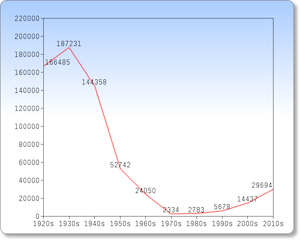New cases of pertussis have been reported in the Riverhead Central School District, according to a notice published yesterday on the school district’s website.
“Please be advised that we continue to have new cases of pertussis in the Riverhead Central School District,” the notice said. “The cases are not limited to one school.” The district did not disclose the number of cases or the school buildings affected.
The district published a similar notice Dec. 3, referencing multiple cases of the illness in more than one building. On Nov. 13, the district reported on case of pertussis in the high school.
Pertussis, commonly known as whooping cough, is a very contagious bacterial respiratory illness spread through the air by coughing and sneezing. Infection can be prevented by vaccine, but immunity fromt he vaccine declines over time, so health officials recommend getting a booster dose — especially if you didn’t get a booster dose as a preteen.
Pregnant women and people who care for infants are urged to get a booster dose. Infants are at greatest risk for getting pertussis and for having severe complications from the disease, including death. About half of infants younger than one year who get pertussis are hospitalized and one or two in 100 hospitalized die, according to the Centers for Disease Control and Prevention.
 Before pertussis vaccines became widely available in the 1940s, about 200,000 children got sick with it each year in the U.S. and about 9,000 died as a result of the infection, according to the CDC. Reported cases of pertussis then declined dramatically, with fewer than 10,000 cases per year from 1965 to 2002. Since 2002, the incidence of the disease has climbed, with more than 48,000 cases reported in 2012 — the highest number since 1955. Reported cases fell to 24,231 in 2013, according the provisional numbers published by the CDC. There have been 2,048 cases reported in the U.S. sod far in 2014 —75 in N.Y., according to the CDC. There were 131 cases reported in N.Y. in 2013.
Before pertussis vaccines became widely available in the 1940s, about 200,000 children got sick with it each year in the U.S. and about 9,000 died as a result of the infection, according to the CDC. Reported cases of pertussis then declined dramatically, with fewer than 10,000 cases per year from 1965 to 2002. Since 2002, the incidence of the disease has climbed, with more than 48,000 cases reported in 2012 — the highest number since 1955. Reported cases fell to 24,231 in 2013, according the provisional numbers published by the CDC. There have been 2,048 cases reported in the U.S. sod far in 2014 —75 in N.Y., according to the CDC. There were 131 cases reported in N.Y. in 2013.
Each year there are about 10 to 20 deaths from the disease, the CDC says. Most deaths are in infants younger than three months old.
The CDC says the recent increase in the number of pertussis cases may be explained by a number of factors, including increased awareness, improved diagnostic tests, better reporting, more circulation of the bacteria, and waning immunity.
Beginning in the 1990s, the type of pertussis vaccine given was switched from a whole cell vaccine to an acellular vaccine, which the CDC says does not protect against the disease for as long as the whole cell vaccine previously in use. The switch was made due to public concerns about the safety of the whole cell vaccine, which was associated with rare but serious neurologic adverse reactions.
“While studies have had inconsistent results that the vaccine could cause chronic neurological problems, public concern in the U.S. and other countries led to a concerted effort to develop a vaccine with improved safety,” the CDC said.
A person with pertussis is infectious for 21 days from the start of the cough, or until he or she has been on five full days of appropriate antibiotic therapy, according to health officials.
The incubation period — time between exposure and development of symptoms — is usually 7-10 days, but may be as long as 42 days.
There are three stages of pertussis infection, according to the county health department:
Stage 1: Mild upper respiratory symptoms, slight cough, possible low-grade fever, lasts 1-2 weeks (mimics a cold, allergies). The cough gradually becomes more severe.
Stage 2: Spasmodic coughing episodes sometimes followed by long whooping sounds, vomiting/gagging, facial color changes, difficulty breathing and exhaustion after coughing episodes. Episodes occur more frequently at night. The person may not appear ill between attacks. This stage lasts up to 6 weeks.
Stage 3: Gradual recovery, coughing episodes may persist for weeks to months. Coughing episodes may return with other respiratory infections or exercise.
Once a susceptible individual is exposed to pertussis, it may take up to 21 days for symptoms to develop; rarely it may be as long as 42 days. The incubation period is usually 7-10 days.
Health officials say if you observe these symptoms in your child or yourself, contact your health care provider and request that your child/you be tested for pertussis with a special nasal-throat swab. This test can be performed in the doctor’s office or hospital emergency room.
The survival of local journalism depends on your support.
We are a small family-owned operation. You rely on us to stay informed, and we depend on you to make our work possible. Just a few dollars can help us continue to bring this important service to our community.
Support RiverheadLOCAL today.































